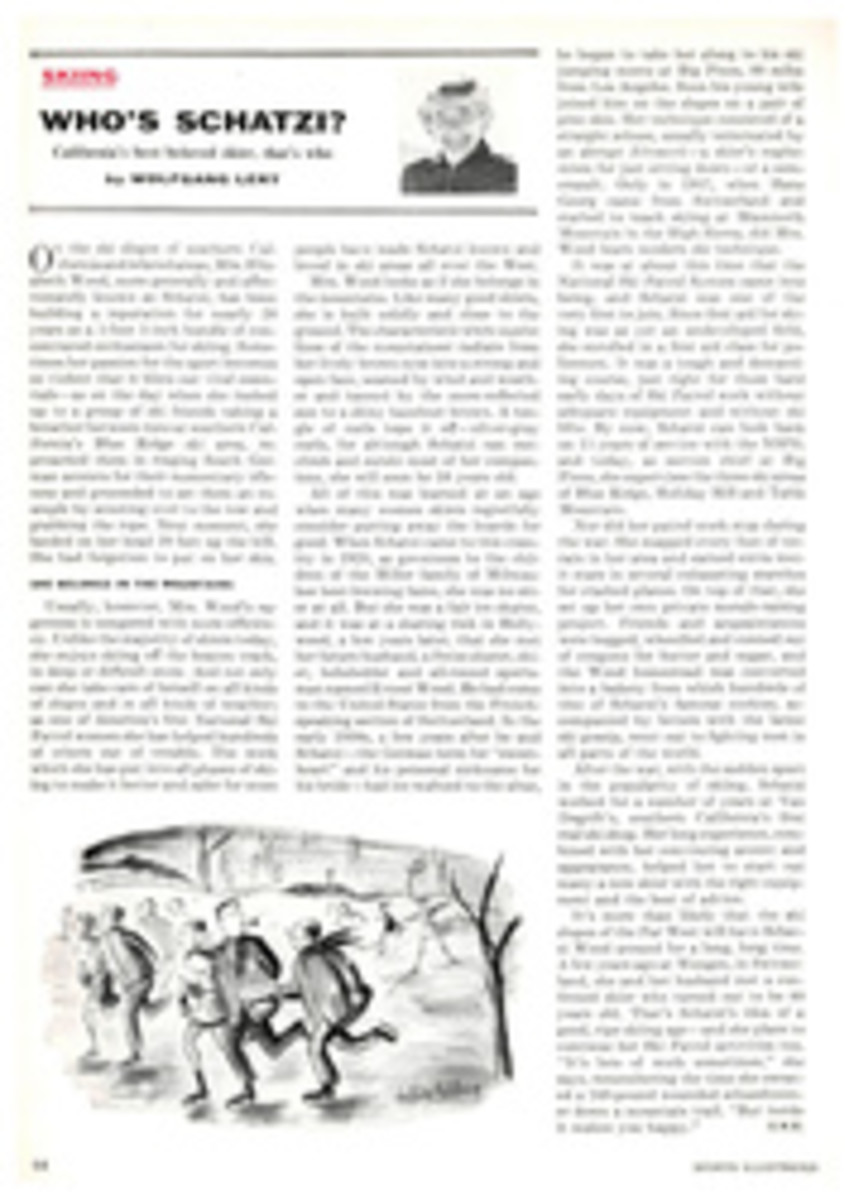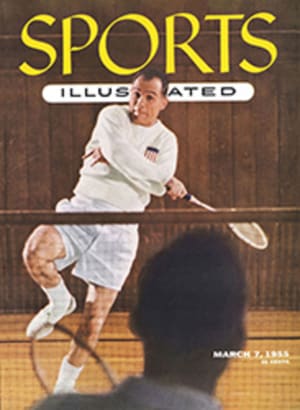
DAYTONA'S ROARING WEEK
Over the broad, flat, dazzling expanse of Daytona Beach a giant cloud of sand mushroomed into the blue Florida sky like dust from an exploding bomb. Perched on sand dunes, on grandstands, on the tops of thousands of parked cars, 28,000 spectators strained eyes and ears as the low rumble of 10,000 horsepower pushing 48 of America's newest and fastest production automobiles swelled to a roar on the backstretch. In double rows, their brightwork masked in heavy tape, windows closed to the brine-filled ocean breeze, the massed cars swept across the starting line near Daytona's tricky south turn and were off on the 160-mile Grand National, the climactic event of a week of speed organized by NASCAR, the National Association for Stock Car Auto Racing.
It was 3:45 on Sunday afternoon. For eight days, since Sunday morning of the week just ended, Daytona's sands had been churned by the wheels of speeding cars. Day by day, they had moved up to the starting line, engines roaring as the green flag dipped, tires biting, sliding, biting again as each car gathered speed, whined up through gears and disappeared, a lonely speck against the immense backdrop of the sea. Records had fallen, favorites had been dethroned, and death took one driver in a flaming crash in those eight days when speed and more speed was all that Daytona thought of. There were moments of disaster and near-disaster, for Daytona is a tricky 4.1-mile course: after the stretch of iron-solid sand comes the north turn, sharp and sliding, into the asphalt-paved switchback; then the south turn, narrow and dangerous, twisting back to the sea and the straightaway again.
There were surprises: Bob Said, a ferociously determined, 22-year-old racing enthusiast from Connecticut sprang the first on Monday. On that day of the sports cars, he barreled a Grand Prix Formula I Ferrari down Daytona's timed mile at 174.334 mph, turned, and sped back again at 166.743 mph for a two-way average of 170.538 mph. Said's performance was as unexpected as it was sensational—it was the first time he had ever driven anything as powerful as the Ferrari, which prompted Phil Walters, heretofore considered a sure winner in Briggs Cunningham's D-Type Jaguar (164.135 mph average), to give him a friendly warning just before the record run. "This is a lot of automobile," said Walters. "Don't push too hard." When Said got through pushing, he was the fastest driver at Daytona in NASCAR's six-year history of beach racing and the second fastest driver ever to race there in any car other than freaks or mammoths built specially for the job.
FASTER AND FASTER
There were rivalries, personal and otherwise. Warren Koechling, an Eastern Airlines pilot, and Brewster Shaw, a Daytona Beach Chrysler dealer, pushed each other through successive runs in the big new Chrysler 300s until Koechling won out with a final two-way average of 127.580 mph which shattered the previous record by over 10 mph. The Ford Thunderbird driven by Joe Ferguson settled for good the argument of whether this new American sports car could top 120 mph—Ferguson clocked 124.633, fastest in his class. The Thunderbird also copped the stock U.S. sports car acceleration run (one mile from a standing start) with 84.66 mph; Bill Frick's 4.9 Ferrari won in its class with 96.102. Louise Bird took the Ladies' Flying Mile on Wednesday in a Jaguar XK-120 at 123.882 mph after Lucie Archbold, with a one-way run of 125.043 mph already behind her, developed ignition trouble in her Mercedes 300SL and slowed to 105.913 on her second try.
There was death, too, under a serene blue sky on Saturday afternoon when Al Briggs, driving a '39 Ford in the modified 125-mile race, was caught by a following car after a tangle with Jim Thompson in another Ford and hurled down the dunes in flames. Thompson escaped with broken bones, but Briggs, burned over 90% of his body, died in the hospital that night.
But for all that went before, no one was taking bets on the outcome of the big race Sunday afternoon as the packed field swept off the asphalt and into the south turn. And it was as well that no one did, for the 160-mile Grand National sprang the biggest surprise of all, and, for the second year running, ended in a sad anticlimax 24 hours after the last car crossed the finish line.
It was a one-minute, 14-second runaway for Glenn the Fireball Roberts in a 1955 Century Buick. By the time the race was half over, Roberts was nearly a minute ahead of his nearest rivals, Tim Flock and Lee Petty in two Chrysler 300s, and Jim Paschal in an Olds 88. For 35 laps these three held their positions while Roberts pulled steadily away. Then Paschal ran out of gas; Ray Duhigg moved up to fourth place in his Olds, and five laps later they crossed the finish line in that order.
It was too good a victory. Under the strict NASCAR rules, every car must be submitted to a rigid test—Fireball's Buick was torn down and closely measured to its very entrails. And because the pushrods actuating four valves had been illegally ground down and polished, he was disqualified. A year before, Tim Flock also lost his victory for a mechanical violation. This year, with Roberts out, Tim Flock in his Chrysler 300 was declared the winner.
PHOTO
WINNER TIM FLOCK got big race when Glenn Roberts was disqualified next day.
PHOTO
STARTING FIELD in the Grand National sweeps into the south turn. At right is Tim Flock's Chrysler; behind him Glenn Roberts' M-l which immediately took lead.
PHOTO
SPECTACULAR CRASHES occurred in early stages of 100- mile Sportsman race when, one after another, eight cars failed to make the slippery south turn. Above, No. 53A noses down dune; below, having straightened, it stops as another goes over.
TWO PHOTOS
FLAMING DEATH (below) came in Saturday's race of "flying junkpiles" when Al Briggs was trapped in wreck of his 1939 modified Ford. Pulled out just before this picture was taken, he died that same night of multiple burns. Race was stopped after crash.
PHOTO
THE LOOK OF DAYTONA during speed week is typified by these cars massed on the beach for the unlimited sports car trials while the broad sea rolls in the background.
PHOTO
BOMBSHELL ON THE BEACH, youthful Bob Said amazed experts by streaking down flying mile at 174.334 mph in a Ferrari for new record, beating latest type Jaguar.

